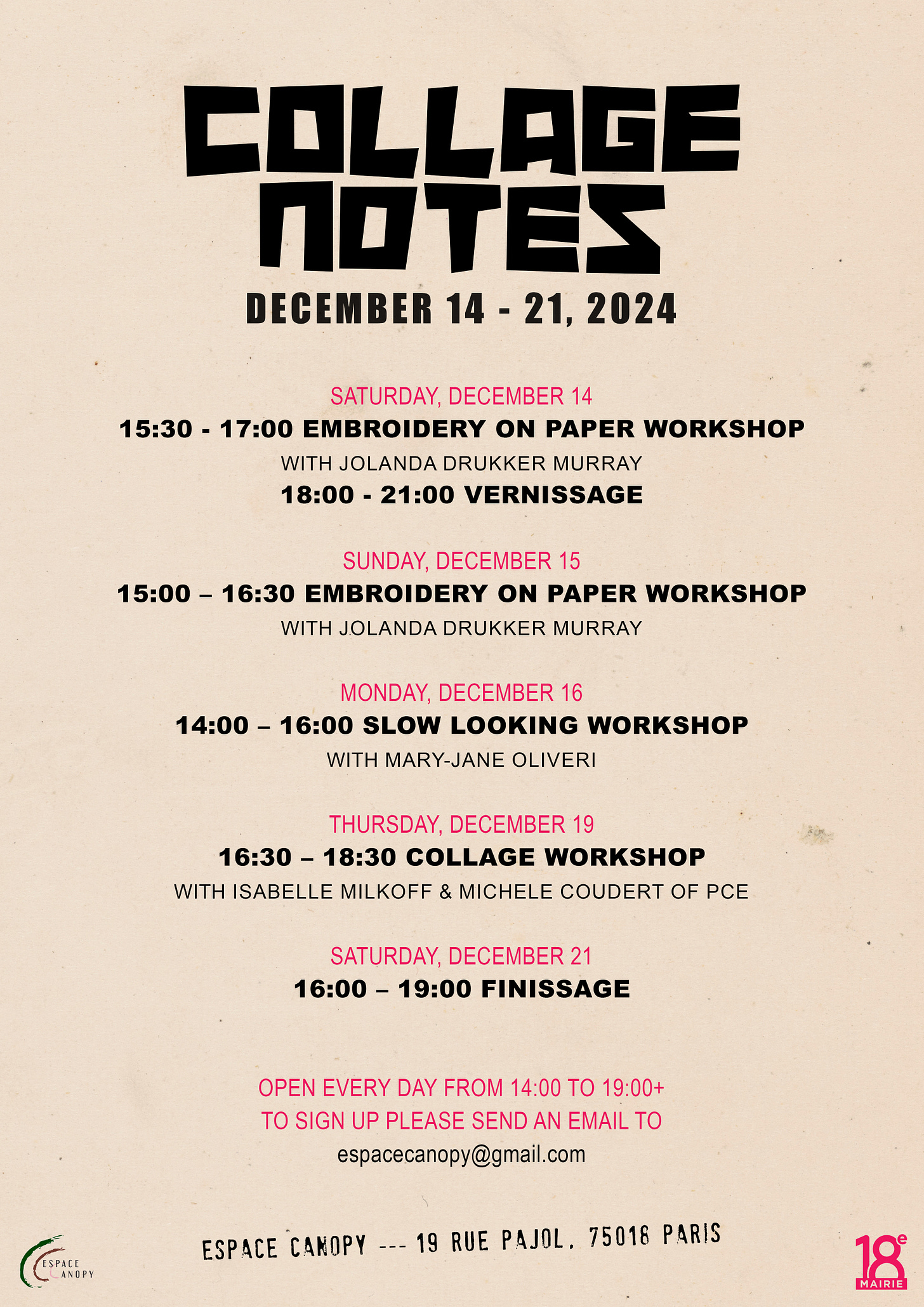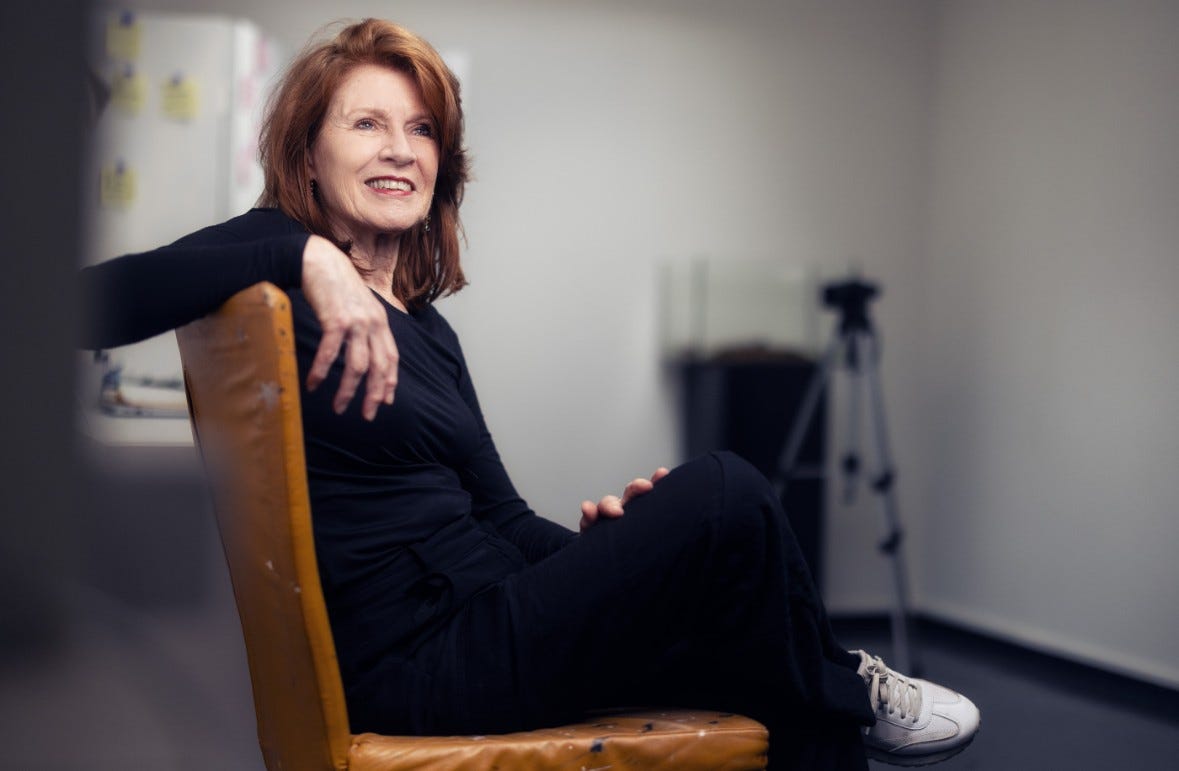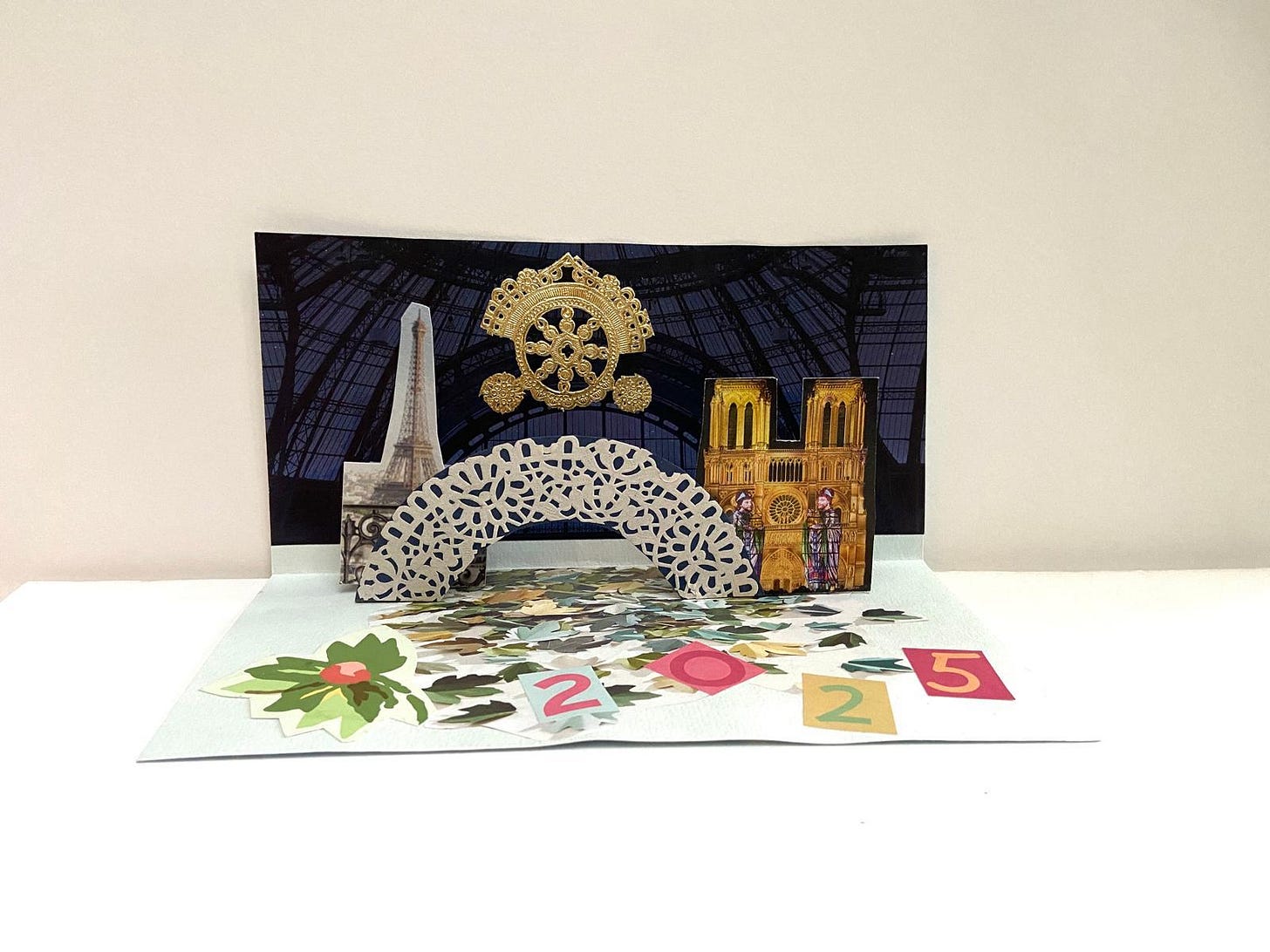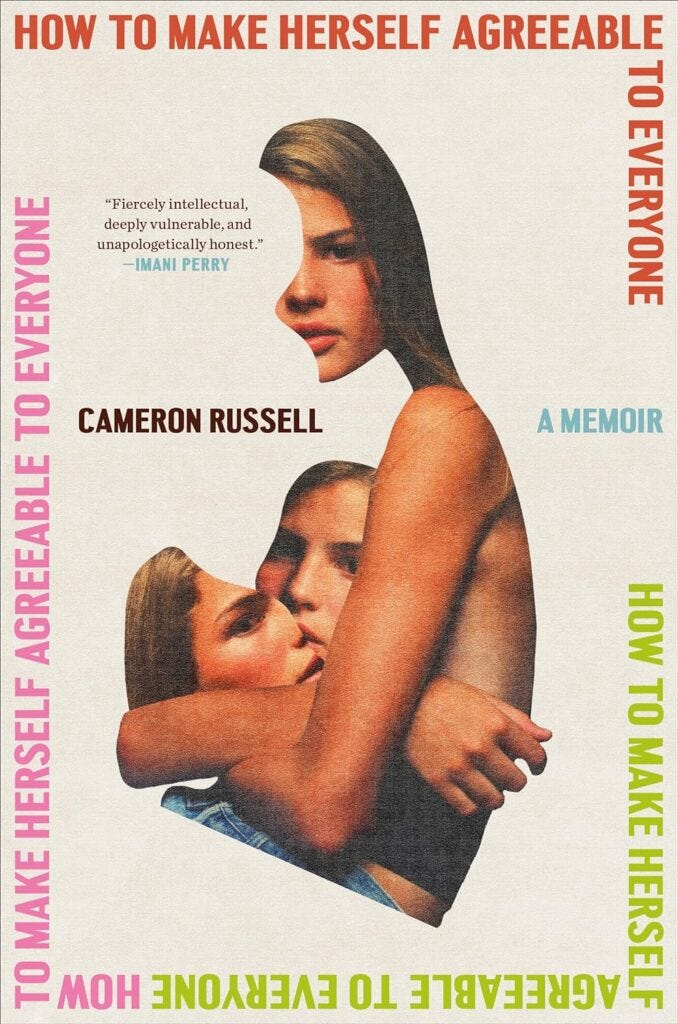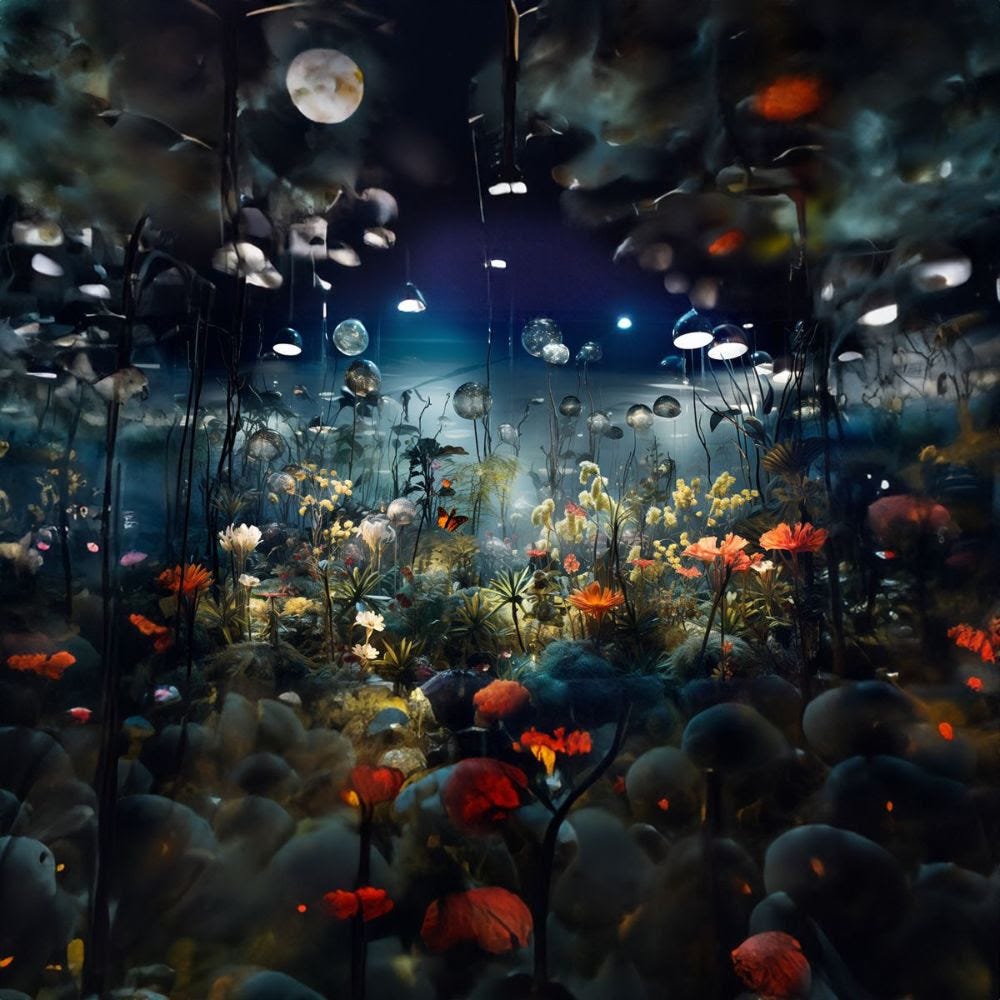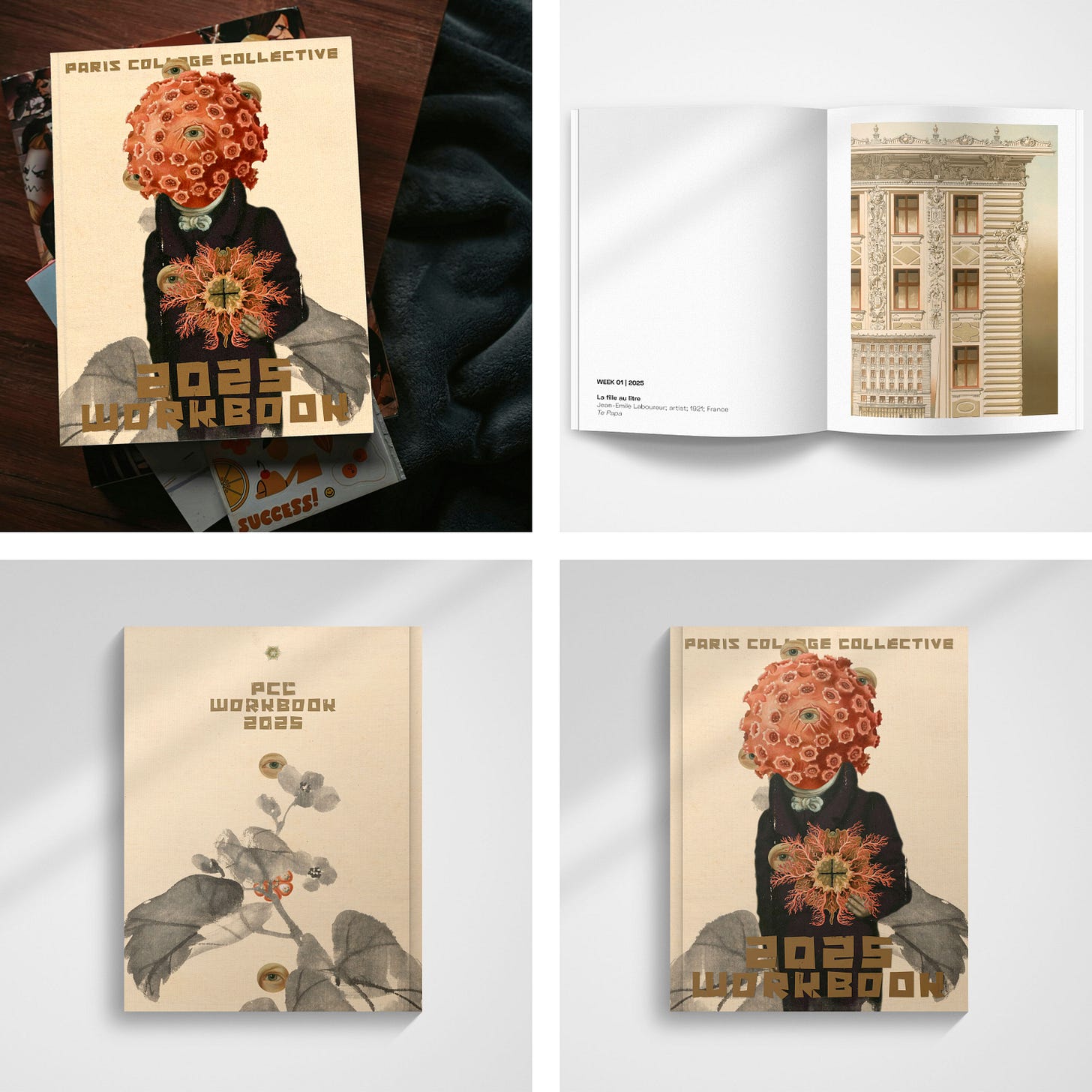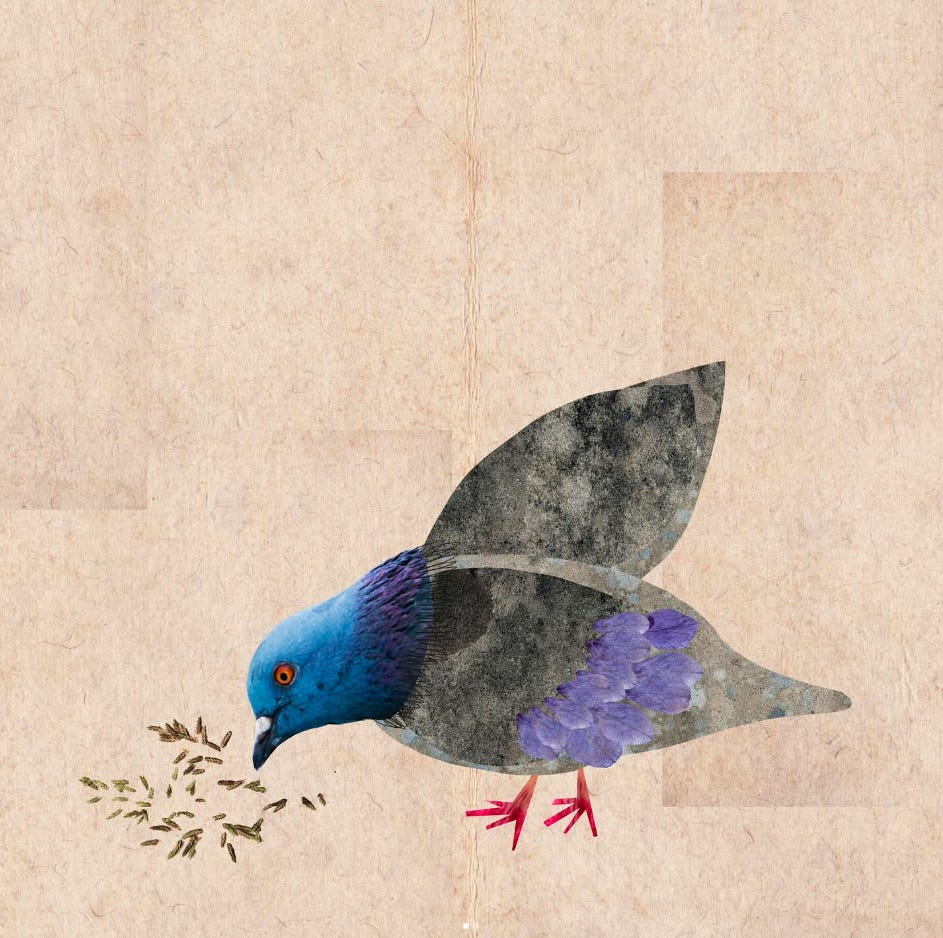
WORDS TO LIVE BY
“Never play to the gallery, but you never learn that until much later on, I think. Never work for other people. Always remember that the reason that you initially started working was that there was something inside yourself that you felt that if you could manifest it in some way, you would understand more about yourself and how you coexist with the rest of society. I think it's terribly dangerous for an artist to fulfill other people's expectations. I think they generally produce their worst work when they do that.”
― David Bowie
The latest collage news and inspiration!
Enjoy!
Substack, this here newsletter platform, offers paid subscriptions, but this is no paywall. We believe in making art accessible to the widest possible audience, and our newsletter will remain free for anyone to read. Opting for a paid subscription is a way to support the collective and all we do. So is signing up to our Artist Directory. Think about it :)
We, everyone involved, are getting really excited about our COLLAGE NOTES exhibition opening TOMORROW (!!!!!) and hope to see as many of you as possible during one of our events. You can find the full program – vernissage, four different workshops & finissage – below or here.
Many thanks to Espace Canopy, above all for having us, but who also organized a SLOW LOOKING workshop, hosted by Mary-Jane Oliveri, for Monday 2pm. Most workshops are full, but please send an email to espacecanopy@gmail.com to sign up. It’s the middle of winter, so not everyone will make it.
The royal WE – Petra – will be at the gallery every day from 2-8pm, plus/minus an hour if need be, and I would love to connect (it will be quieter during the week, just saying).
Our workshops are hosted by:
JOLANDA DRUKKER MURRAY
Around March 2020, sculptor Jolanda Drukker Murray rediscovered working with textiles and ever since she has been looking for the meeting point of embroidery and sculpture. The visual storyteller in her makes her interested in nature, in people and their behavior in society, both as a sculptor and in textiles.
As a sculptor, Jolanda is used to working with hard materials such as ceramics and bronze. With the same creativity she works with soft materials where the many possibilities of expression continue to fascinate her. She uses different techniques such as hand embroidery, machine embroidery, photo transfers and mixed media. In textile art she works investigative and 'learning by doing' is her motto.

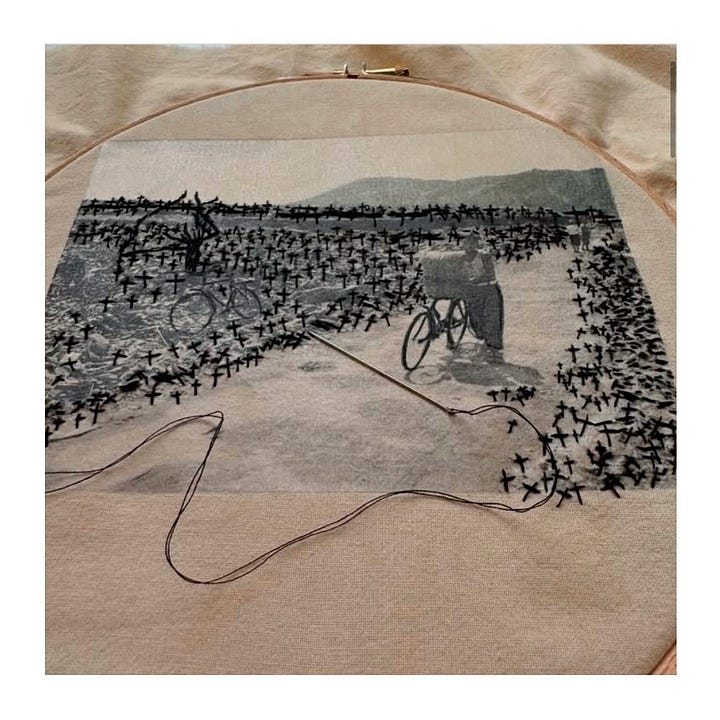
Her work is shown in exhibitions in The Netherlands and abroad. It is included in various Dutch and foreign collections, including private collections, the Ghent City Archives, the Chelsea and Westminster Hospital in London and the Antoni van Leeuwenhoek Cancer Center in Amsterdam. She is represented by Sille Gallery in Oudewater and Pansa Gallery in Amsterdam.
In addition to her work, Jolanda is a (online) teacher in 'Photo Embroidery and Mixed Media' and ‘Personal Visual Style Development’ at Strudelmedia in New York and a member of the think tank for the Textile Festival The Netherlands 2026. She is involved with the setup of the program of this festival.
MARY-JANE OLIVERI
SLOW LOOKING is simply the art of learning through observation. You can do it anywhere, not just in a museum, you just have to look at an object for a longer time.
In fact, the average time to look at a work of art in a museum is 15 seconds. However, some works of art do not inspire any feeling until you have looked at them and thought about them for a while. It does not happen in 15 seconds!
In this Slow Looking workshop, we will observe, contemplate, interpret, reflect and react to a work of art together in order to appreciate the benefits of a deeper observation.
PARIS COLLAGE ENSEMBLE
Michèle Coudert and Isabelle Milkoff are part of the Paris Collage Ensemble, a group of seven collagists united by their passion and their diverse practice of collage. Michèle Coudert offers 3D collages and Isabelle Milkoff works from painted backgrounds. As part of the Collage-Notes exhibition, the two artists invite you to create two types of postcards, a traditional card and a pop-up card, on the theme of Paris en Fête.
NEWS
For the past nine years, Park City-based engineer David Wiener, the founder and chief executive officer of David Wiener Ventures, DWV Entertainment and Respect the Music Foundation, has focused on fine-art photography.
The entrepreneur, who has worked for the likes of Porsche and Ferrari as a mechanic and marketer, creates what he calls “modern abstracts,” which are collages of automotive-detail closeups that include engine parts, decals and dashboards, to name a few. - Park City entrepreneur pieces together ‘modern abstracts’ - via The Park Record
Collage and assemblage were the two techniques of creating works of art from fragments and objects. Collages were usually made with paper of similar flat materials, while assemblages incorporated three-dimensional objects, often not crafted but found or purchased by the artist. Collage and assemblage techniques became popular first in the Synthetic Cubism movement. Pablo Picasso, Georges Braque, and Juan Gris used cut-out fragments to add visual complexity to the painted images and connect them to the material world. Later, Neo-Dadaists and Pop artists adopted these techniques to explore consumerism and communication through advertisement. - 12 Most Important Art Techniques of Modern Times - via The Collector
Collage has always presented an unfamiliar organic-ness to me. The combination of organic and order is great. - The 167 Best Book Covers of 2024, According to 54 Book Cover Designers - via Literary Hub
Dubuffet himself created collages and assemblages from various objects, including real butterfly wings, straws, broken bottles, and grapevines. Still, although Dubuffet was the first one to approach assemblage from the theoretical point of view, he was certainly not the first artist to apply this technique. Usually, art historians refer to the Cubist art movement as the pioneering one in the use of assemblage and collage. One of the first works that added three-dimensional elements to the painted surface was Pablo Picasso’s Still Life with Chair Caning. The still life represented a scene happening at a busy Parisian cafe and incorporated a fragment of a chair seat. Conceptually speaking, assemblage is a rather fluid category, existing in between collage (its two-dimensional alternative), sculpture, and installation. Some works featured fragments of painting, which made them even more difficult to categorize. - What Is Assemblage? A Look Into 3D Collage Techniques - via The Collector
From flowery headdresses to botanical guises to houses perched on the tippy-top of tree stumps, Julie Liger-Belair’s collages invite us into a whimsical world. In paper and found objects, she dives into personal stories and the emotional connections binding us to nature, place, and a sense of belonging. - Cozy Homes and Woodland Wonders Abound in Julie Liger-Belair’s Collages - via Colossal
Collage and assemblage are two techniques for creating artworks from existing pieces. Collages usually feature flat fragments of paper, while assemblages include three-dimensional pieces. Collages became popular artistic techniques among modern artists who sought new forms of expressive methods. Popularized by Cubists, collage and assemblage were soon adopted by other art movements. Here’s everything you need to know about collage art techniques. - The Art of Collage and Assemblage in Modern Art - via The Collector
The exhibition has 12 collages, which blend physical and digital worlds in one image and urge viewers to step into an otherworldly place. The pictures are set in riparian zones, a fragile ecosystem where the water levels impact the entire environment. The work is a comment on the residence of nature. Mattingly was inspired to create the series while she was on a talk at the Socrates Sculpture Park, and the collages replicate that environment. However, what’s interesting to note is that while digitally capturing images, Mattingly hand-painted the flowers, added fabrics, and scanned the plants. Her experimental images also use mirrors and fish tanks to create an exchange between the real and the imagined. - Robert Mann Gallery Presents a Truly Stunning Nature Exhibit - via The Phoblographer
PCC
A selection of challenge submissions from last week is up on our website and can be seen here, the image prompt for next week is available to download here
Our 2025 Workbook is out and available for sale on our website. Our weekly creative challenge remains free and open to everyone and everything, digital or analog artists, French or not. The workbook is an optional add-on for those who prefer to work with paper and don’t want to print our images themselves. Like every year, the book is designed so that you can either take it apart or create your collages in the book itself. Week numbers and image sources are on the back of each image, so even if your books falls apart at one point, you will always know what’s what!
And last but not least, have a look at and/or submit to our ‘other’ Instagram account Paris Collage Collective Unlimited where we showcase collages that have absolutely nothing to do with our weekly creative challenge.
If you have any news about exhibitions, publications or events you want so share with the community, please send an email with all relevant information and at least one link to a website or venue to: hello@pariscollagecollective.com




